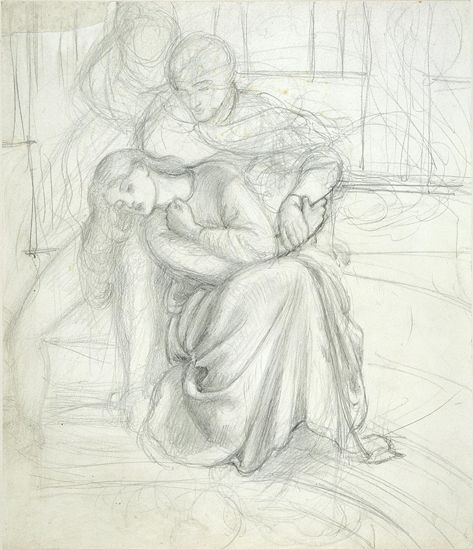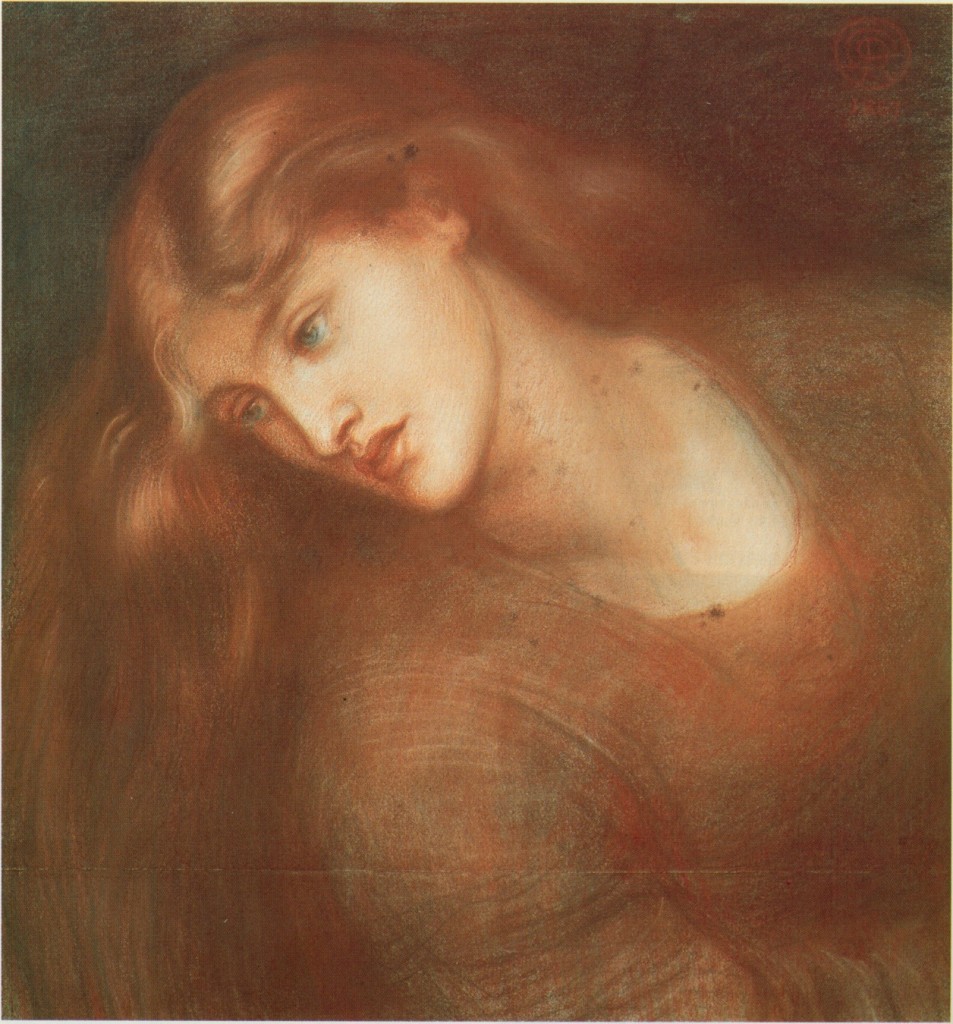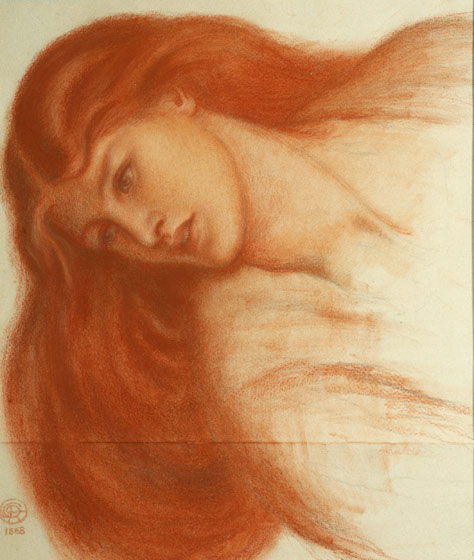Medusa was once a beautiful maiden who was transformed by the goddess Athena into a Gorgon.
Of all three Gorgons, Medusa alone was mortal. Her hair was a mass of writhing serpents and a glimpse of her face would turn you to stone.
Perseus, son of Zeus and Danae, avoided Medusa’s deadly gaze by viewing her reflection in his shield, allowing him to behead her. Pegasus sprang from her spilled blood.
On his journey home, Perseus discovered Andromeda naked and chained, a prisoner of the sea monster Ketos. Using Medusa’s head, Perseus killed Ketos and saved Andromeda, who later became his wife.
Dante Gabriel Rossetti planned a painting of Perseus showing Andromeda the Gorgon’s head, yet the work never came to fruition. It was commissioned by a brewer, Mr. C.P. Matthews, who later felt that the severed head aspect of the painting would be too gruesome for his drawing room.

Rossetti wrote to Matthews that “the head, treated as pure ideal, presenting no likeness (as it will not) to the severed head of an actual person, being moreover so much in shadow (according to my arrangement) that no painful ghastliness of colour will be apparent…”
Despite Rossetti’s assurance, the work was abandoned.
His concept of the work is visible through the poem Rossetti later wrote to accompany the picture.
Aspecta Medusa (For a Drawing)
Andromeda, by Perseus sav’d and wed,
Hanker’d each day to see the Gorgon’s head:
Till o’er a fount he held it, bade her lean,
And mirror’d in the wave was safely seen
That death she liv’d by.Let not thine eyes know
Any forbidden thing itself, although
It once should save as well as kill: but be
Its shadow upon life enough for thee.
Rossetti adds a twist to the story, giving Andromeda an incessant desire to view Medusa’s head. He imbued her with a hunger, a need. She ‘hanker’d each day to see the Gorgon’s head’. In his drawing, we can see Perseus allowing her to see it in the reflection of the water below.
In the second passage, Rossetti seems to be warning us not to pursue forbidden things. ‘Let not thine eyes know any forbidden thing itself.’ Yet Andromeda does not see the thing itself, merely a shadowy reflection. And Rossetti’s letter to Matthews tells us that he intended the head to be shadowy. It’s as if he is saying, let’s not look at forbidden things directly. Let’s explore them safely through smoke and mirrors. A shadow or a reflection can never be the thing itself. They cannot harm us.
Let not thine eyes know/Any forbidden thing itself, although/It once should save as well as kill/
Perhaps he is warning us not to approach forbidden things head on. Exploring them through art: imagery, metaphor, allegory, enables us to confront these things as safely as Andromeda gazing on Medusa’s reflected head.
Isn’t this part of the purpose of art? Let’s look at modern television as an example: many 1970s prejudices fell on deaf ears until confronted through comedic shows such as All in the Family addressed issues of rape, antiwar activism, and bigotry.
Whatever its medium, art provides a framework to explore and absorb ideas.
What was Andromeda’s need to see the Gorgon’s head? Was it to confront the fact that it is due to Medusa’s death that she was still alive?
Rossetti’s poem is one of duality, mentioning both death and life. Perhaps his idea of Andromeda was one of a woman who needed to visualize the very creature whose death allowed her life.
Medusa’s face brought upon the demise of every soul who looked upon her and it was this power that saved Andromeda.
Maybe Andromeda wanted to whisper a silent thank you.
I like to think that she sought to mentally process the cycle that led to her rescue: the slain head she longed to see was once beautiful, then spent its last years in monstrosity, until severed by Perseus and used as a weapon.
As Rossetti said, /It once should save as well as kill: but be/Its shadow upon life enough for thee/



Excellent! merci
Mcroseiro